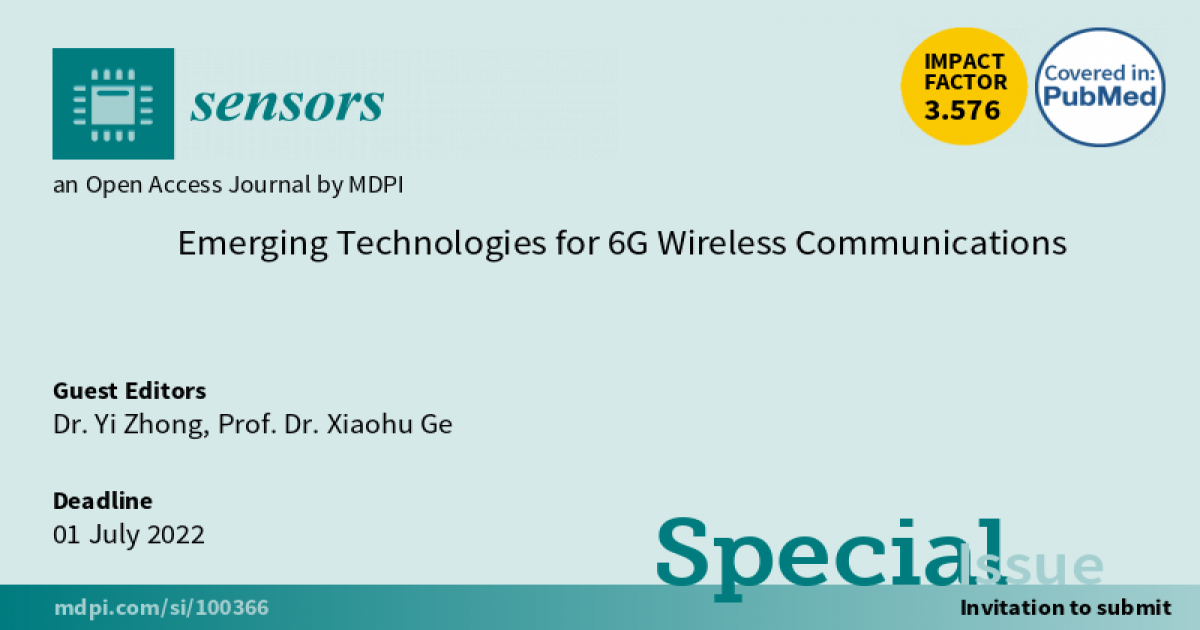Emerging Technologies for 6G Wireless Communications
A special issue of Sensors (ISSN 1424-8220). This special issue belongs to the section "Communications".
Deadline for manuscript submissions: closed (1 July 2022) | Viewed by 2656

Special Issue Editors
Interests: heterogeneous and femtocell-overlaid cellular networks; wireless ad hoc networks; stochastic geometry; point process theory
Special Issues, Collections and Topics in MDPI journals
Special Issue Information
Dear Colleagues,
Information technology represented by 5G has penetrated into a variety of industries. With the continuous evolution of users' needs, it is estimated that by 2030, wireless data traffic will reach 4394eb (Source: ITU) and network equipment will be heterogeneous. The global connection of 6G networks, the improvement of connections from two-dimensional space to three-dimensional space and the growth of connection terminals are needed to further improve the connection density of 6G networks compared with 5G networks. Here, 6G needs to provide an integrated heterogeneous network architecture to acheive lower latency, higher reliability, and intelligent network sensing. The purpose of this Special Issue is to study the emerging technologies of 6G wireless communications. Topics covered will include, but are not limited to:
- Artificial intelligence (AI) applications for 6G communications
- 6G networks’ dynamic network slicing
- Quality of service (QoS) for 6G communications
- Multiple access schemes suitable for 6G
- Resource management and collaborative deployment technology in 6G networks
- Integrated management mechanism for 6G heterogeneous networks
- Integration of sensory communication
- Integrating space–air–ground networks for 6G
Dr. Yi Zhong
Prof. Dr. Xiaohu Ge
Guest Editors
Benefits of Publishing in a Special Issue
- Ease of navigation: Grouping papers by topic helps scholars navigate broad scope journals more efficiently.
- Greater discoverability: Special Issues support the reach and impact of scientific research. Articles in Special Issues are more discoverable and cited more frequently.
- Expansion of research network: Special Issues facilitate connections among authors, fostering scientific collaborations.
- External promotion: Articles in Special Issues are often promoted through the journal's social media, increasing their visibility.
- e-Book format: Special Issues with more than 10 articles can be published as dedicated e-books, ensuring wide and rapid dissemination.
Further information on MDPI's Special Issue polices can be found here.







